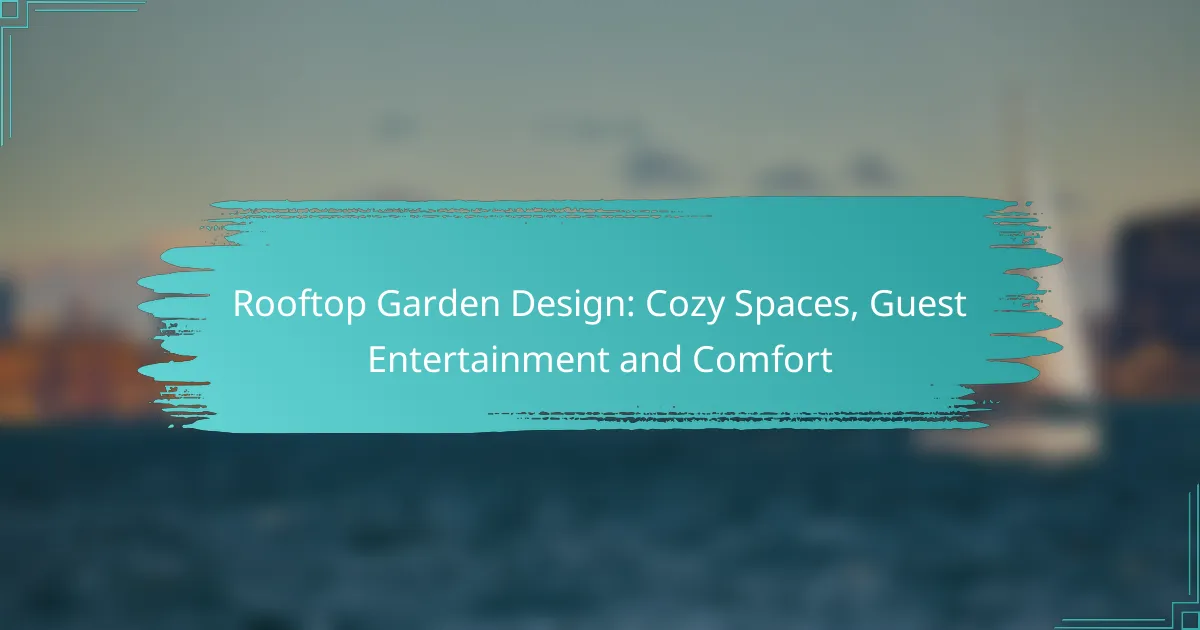Creating a rooftop garden designed for guest entertainment combines comfort, ambiance, and accessibility to foster social interaction and relaxation. By selecting the right plants that thrive in urban environments and incorporating thoughtful design elements, you can transform your rooftop into an inviting oasis that enhances outdoor enjoyment for all your guests.
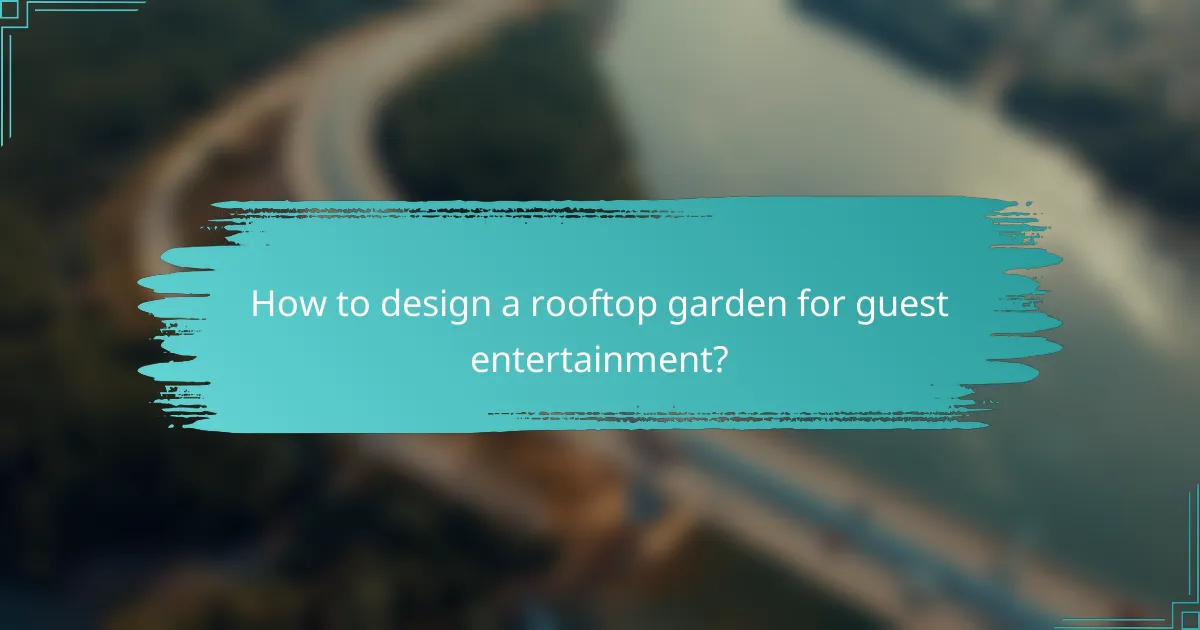
How to design a rooftop garden for guest entertainment?
Designing a rooftop garden for guest entertainment involves creating inviting spaces that encourage social interaction and relaxation. Focus on comfort, ambiance, and accessibility to ensure your guests enjoy their time outdoors.
Incorporate comfortable seating areas
Comfortable seating is essential for a rooftop garden designed for entertaining guests. Consider using a mix of lounge chairs, sofas, and benches to accommodate different group sizes and preferences. Opt for weather-resistant materials to ensure durability and comfort throughout the seasons.
Arrange seating in clusters to promote conversation and interaction. Include cushions and throws to enhance comfort, especially during cooler evenings. Aim for a balance between open space for movement and cozy nooks for intimate gatherings.
Use ambient lighting for atmosphere
Ambient lighting sets the mood for your rooftop garden, making it inviting for evening gatherings. String lights, lanterns, and solar-powered garden lights can create a warm and welcoming atmosphere. Choose soft, warm tones to enhance the cozy feel.
Consider layering different types of lighting, such as overhead fixtures and ground-level lights, to add depth and interest. Ensure that pathways are well-lit for safety while maintaining a relaxed vibe. Dimmer switches can also help adjust the brightness according to the occasion.
Add a fire pit for warmth
A fire pit serves as a focal point and provides warmth, making it ideal for cooler evenings. Choose a portable or built-in fire pit, depending on your space and design preferences. Ensure it complies with local regulations regarding open flames and safety.
Surround the fire pit with comfortable seating to encourage guests to gather around. This not only enhances the social aspect but also creates a cozy ambiance. Remember to stock up on firewood or alternative fuel sources to keep the fire going throughout your gatherings.
Include a bar or beverage station
A dedicated bar or beverage station enhances the entertainment experience in your rooftop garden. This can be as simple as a cart with drinks or a more elaborate built-in bar with seating. Stock it with a variety of beverages to cater to different tastes.
Consider including a small refrigerator or cooler for easy access to chilled drinks. Providing glassware, mixers, and garnishes will encourage guests to help themselves and create their own cocktails. Ensure the area is well-organized for efficiency during busy gatherings.
Choose versatile plants for aesthetics
Selecting versatile plants is key to achieving an attractive rooftop garden that complements your entertainment space. Opt for a mix of perennials, annuals, and evergreens to provide year-round interest. Consider plants that thrive in your local climate and require minimal maintenance.
Incorporate vertical gardens or planters to maximize space and create a lush environment. Use plants with varying heights and textures to add depth and visual appeal. Additionally, fragrant plants can enhance the sensory experience for your guests.
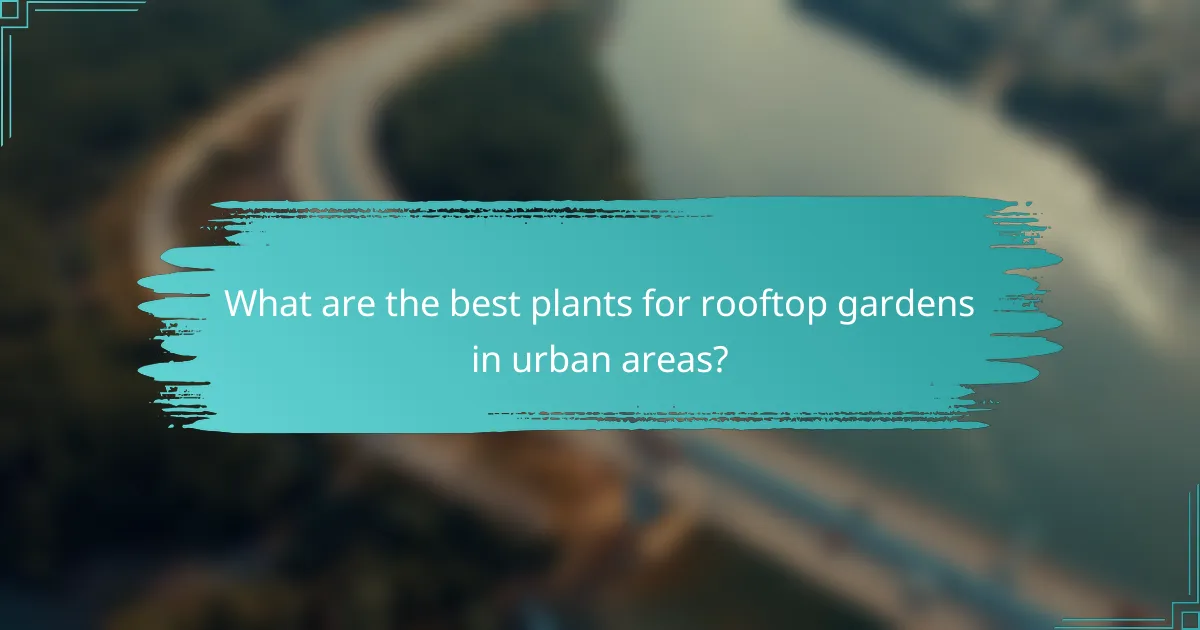
What are the best plants for rooftop gardens in urban areas?
The best plants for rooftop gardens in urban areas are those that thrive in limited soil, withstand wind, and require minimal maintenance. Consider factors like sunlight exposure, local climate, and the intended use of the garden when selecting plants.
Succulents for low maintenance
Succulents are ideal for rooftop gardens due to their ability to store water and survive in dry conditions. Varieties such as Sedum, Echeveria, and Aloe Vera require minimal watering and can thrive in poor soil, making them perfect for busy urban dwellers.
When planting succulents, ensure they receive plenty of sunlight, ideally six hours a day. Grouping different types can create visual interest while still maintaining low upkeep.
Herbs for culinary use
Herbs like basil, rosemary, and thyme are excellent choices for rooftop gardens, providing fresh ingredients for cooking. They typically require a sunny spot and well-drained soil, making them suitable for container gardening.
Consider planting herbs in small pots or vertical planters to maximize space. Regular harvesting encourages growth, so use them frequently in your meals to keep the plants thriving.
Flowering plants for color
Flowering plants such as petunias, marigolds, and geraniums can add vibrant colors to your rooftop garden. These plants not only beautify the space but also attract pollinators, enhancing the garden’s ecosystem.
Choose varieties that are suited to your climate and ensure they have adequate drainage. Deadheading spent flowers will promote further blooming and keep your garden looking fresh.
Climbers for vertical space
Climbing plants like clematis, jasmine, and ivy can effectively utilize vertical space in rooftop gardens. They can be trained to grow on trellises or walls, adding greenery without taking up valuable floor area.
When selecting climbers, consider their growth rate and sunlight needs. Regular pruning will help manage their size and encourage healthy growth, ensuring they remain manageable and attractive.
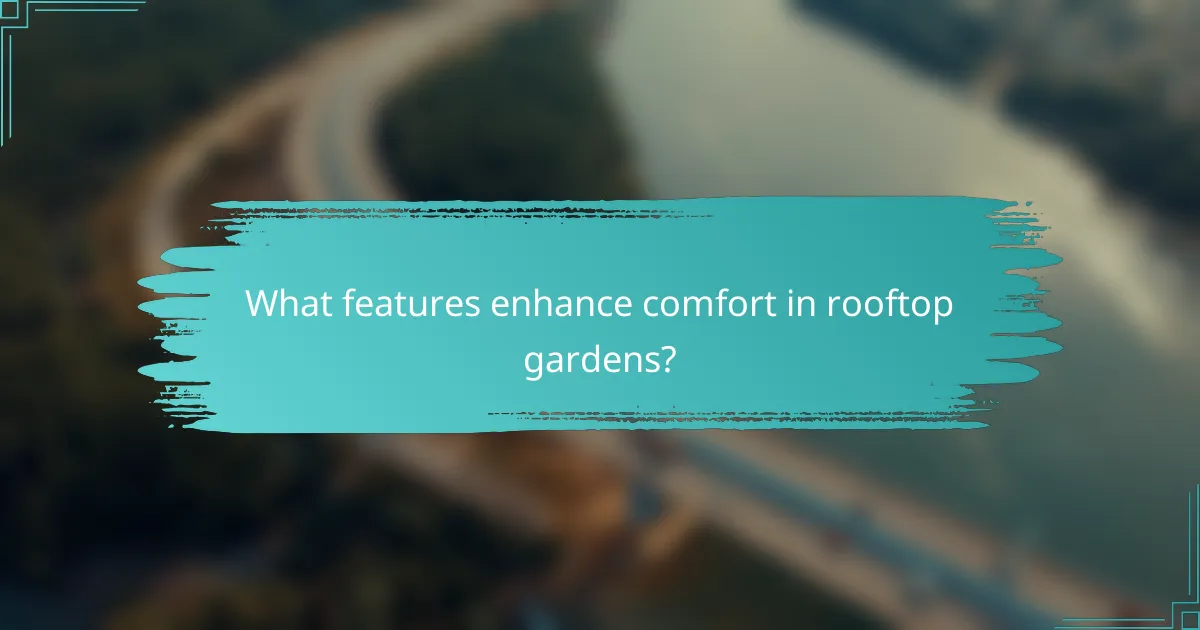
What features enhance comfort in rooftop gardens?
Comfort in rooftop gardens is enhanced through thoughtful design elements that provide protection from the elements, create inviting spaces, and promote relaxation. Key features include shade structures, weather-resistant furniture, cozy outdoor rugs, and tranquil water features.
Install shade structures for sun protection
Shade structures are essential for protecting guests from direct sunlight, making rooftop gardens more enjoyable during hot days. Options include pergolas, awnings, or umbrellas, which can reduce heat and glare significantly.
When selecting a shade structure, consider materials that withstand local weather conditions. For instance, UV-resistant fabrics are ideal for sunny climates, while wooden structures can provide a classic look but may require regular maintenance.
Use weather-resistant furniture
Choosing weather-resistant furniture is crucial for maintaining comfort and longevity in rooftop gardens. Materials like aluminum, teak, and synthetic wicker are popular choices due to their durability against rain and sun.
Opt for cushions made from outdoor fabrics that resist fading and moisture. This ensures that your seating remains comfortable and visually appealing throughout the seasons. Regular cleaning and storage during harsh weather can extend the life of your furniture.
Add outdoor rugs for coziness
Outdoor rugs can significantly enhance the coziness of rooftop gardens by adding warmth and texture underfoot. They help define seating areas and create a more inviting atmosphere for guests.
When selecting outdoor rugs, look for options made from durable, weather-resistant materials such as polypropylene or nylon. These materials are easy to clean and can withstand exposure to the elements, making them ideal for outdoor use.
Incorporate water features for tranquility
Water features, such as fountains or small ponds, can introduce a sense of tranquility to rooftop gardens. The sound of flowing water creates a calming ambiance, making it an ideal space for relaxation and social gatherings.
Consider the size and scale of the water feature to ensure it complements the garden’s overall design. Small, self-contained fountains are often easier to maintain and can fit well in limited spaces, while larger installations may require more planning and upkeep.
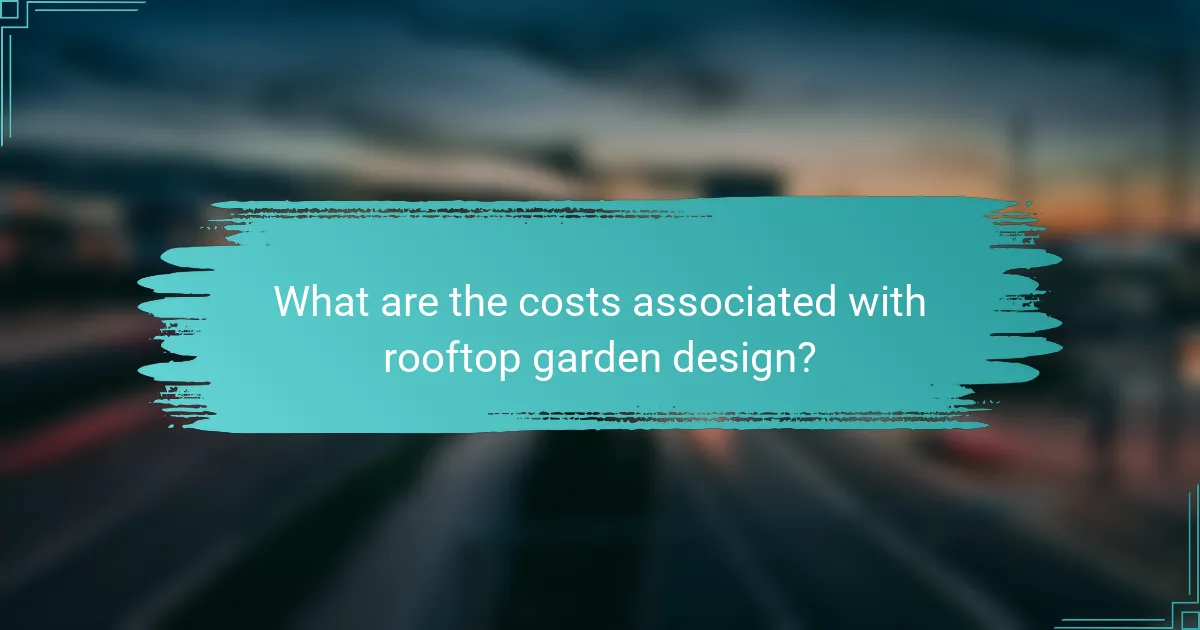
What are the costs associated with rooftop garden design?
The costs associated with rooftop garden design can vary widely based on factors such as size, materials, and complexity. Generally, you can expect to invest in both initial setup costs and ongoing maintenance expenses to ensure a thriving garden space.
Initial setup costs for materials
Initial setup costs for a rooftop garden typically include expenses for soil, plants, containers, irrigation systems, and hardscaping elements like decking or seating. Depending on the quality and type of materials chosen, these costs can range from a few hundred to several thousand dollars.
For example, basic container gardens may start at around $500, while more elaborate designs with custom features can exceed $5,000. It’s essential to plan your budget according to the size of your rooftop and the desired features.
Ongoing maintenance expenses
Ongoing maintenance expenses for a rooftop garden include costs for watering, fertilizing, pest control, and seasonal plant replacements. These costs can vary based on the size of the garden and the types of plants used, typically ranging from $50 to $300 per month.
Additionally, consider hiring a professional gardener or landscaping service if you prefer not to manage maintenance yourself. This can add to your monthly expenses but may ensure a healthier and more aesthetically pleasing garden.
